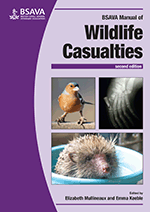
Full text loading...

The Scottish wildcat is the only remaining indigenous member of the cat family in Britain. In addition to habitat loss and historical persecution, a major threat to the Scottish wildcat population is introgressive hybridization with the domestic cat. The Scottish wildcat has been identified as a key conservation target in Scotland. This chapter covers: ecology, biology and behaviour; anatomy and physiology; capture, handling and transportation; clinical assessment; first aid and hospitalization; anaesthesia and analgesia; specific conditions; therapeutics; husbandry; rearing of wildcat kittens; rehabilitation and release; and legal considerations.
Wildcats, Page 1 of 1
< Previous page | Next page > /docserver/preview/fulltext/10.22233/9781910443316/9781910443316.20-1.gif

Full text loading...



